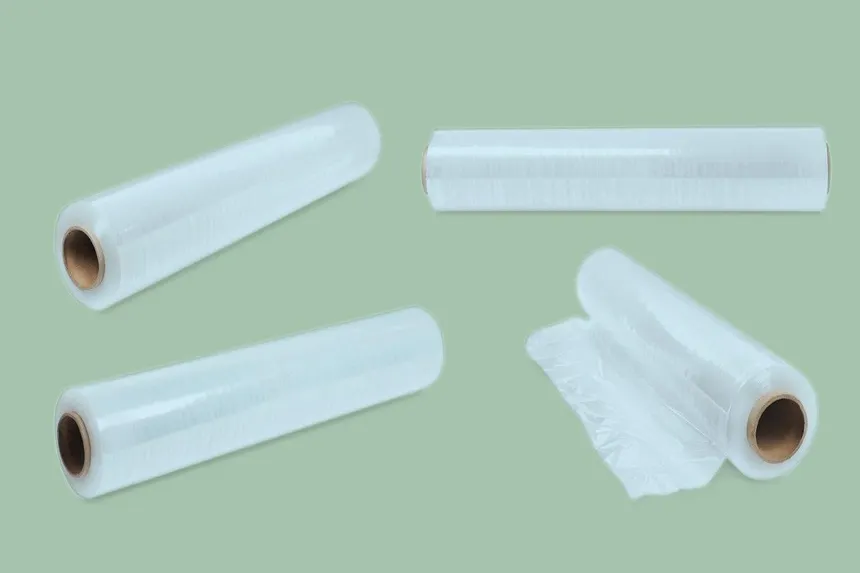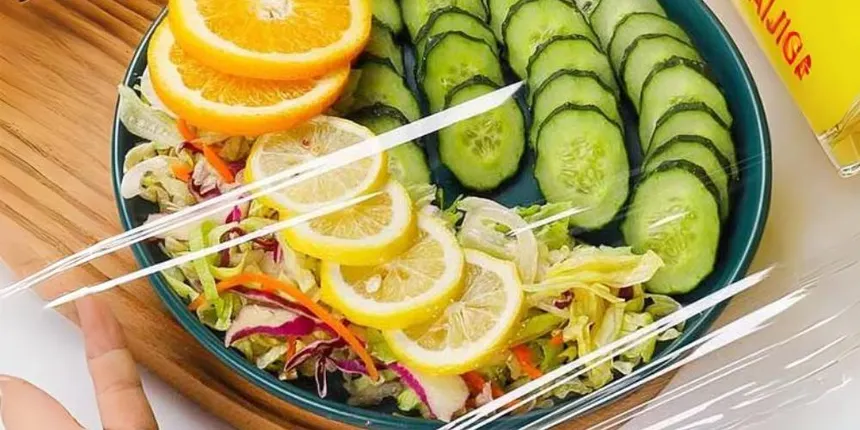PVC Cling Film Vs Non PVC: What Are They & Their Differences
Confused about which cling film to buy? Check out the PVC cling film vs non PVC cling film showdown to help decide which one is good for you.
Cling film is also called plastic or food wrap. It is mostly used in kitchens and homes all over the world.
It can be used for several purposes, but mainly for protecting and preserving foodstuffs.
But there’s always confusion when it comes to which cling film to buy.
So, in this post, we’ll examine the differences between PVC cling film vs non PVC. This will help you make the right choice next time you’re in the market.
What is PVC Cling Film?
PVC cling film, also known as polyvinyl chloride cling film, is a type of plastic or food wrap widely used for packaging food.
It is shiny and fog-resistant, which helps maintain the freshness of the food.
Here are some key features of PVC cling film:
- Material: Made from polyvinyl chloride (PVC).
- Cling and Stretchability: It has excellent cling and stretch properties, making it highly effective for wrapping various shapes and sizes.
- Transparency: It offers higher clarity compared to other types of cling film, providing better visibility of the wrapped contents.
- Breathability: It allows a certain level of oxygen and moisture diffusion, which can be beneficial for preserving food.
- Common Applications: It is mainly used for wrapping fruits, vegetables, meat, and dairy products.
- Temperature Range: It can be used over a broad temperature range but is not suitable for wrapping fatty foods.
- Environmental Impact: PVC cling film is harder to recycle and may release chemicals, making it less environmentally friendly compared to other types of cling film.
What is a Non PVC Cling Film?
Unlike the PVC cling film, the non-PVC cling film is a type of plastic or food wrap that does not contain polyvinyl chloride (PVC).
It is considered to be more environmentally friendly and safer for food use compared to the usual PVC cling film.
Here are some key points about Non-PVC Cling Film:
- Composition: It is typically made from materials like low-density polyethylene (LDPE) or other alternatives to PVC.
- Recyclability: Non-PVC cling film is recyclable and can be disposed of in the same way as other plastic films.
- Safety: It is generally safer for food use and does not contain harmful phthalates.
- Performance: While it may not have the same cling properties as PVC film, it is still effective for wrapping food and can be used in various kitchen applications.
- Biodegradability: Some non-PVC cling films are biodegradable, but they are not necessarily compostable.
- Usage: It is recommended for food use and can be used in the fridge to cover food containers, but it is not suitable for direct microwave use or high-heat applications.
PVC Cling Film vs Non-PVC Cling Film: The Difference

The main differences between PVC cling film vs non-PVC cling film are their material composition, cling properties, and environmental impact.
Shortly, we’ll look into each of these to clearly state their differences.
Material Composition and Properties
- PVC Cling Film: Made from Polyvinylidene Chloride, it has better cling properties and is the preferred choice of most professional caterers. However, it is not biodegradable and can take thousands of years to decompose.
- Non-PVC Cling Film: Made from Low-Density Polyethylene, it is more environmentally friendly, biodegradable, and can decompose naturally in landfills or home compost bins. However, it has less adhesive properties compared to PVC cling film, but this can be improved by adding linear low-density polyethylene.
Production and Usage
The production of PVC cling film involves a PVC cling film extrusion line, which is a specialized machinery designed to manufacture high-quality cling film.
This process ensures that the PVC cling film meets the required standards for food packaging and storage.
In terms of usage, PVC cling film is suitable for baking and food storage, while non-PVC cling film is more resistant to scuffing but not suitable for high-fat foods.
Both types of cling film should be kept at least 2 centimeters away from food items to ensure safety.
Environmental Considerations
It’s worth noting that non-PVC cling film is a better option for those looking for a more environmentally friendly alternative, as it can reduce environmental damage and minimize waste.
However, PVC cling film still has its advantages, particularly in terms of its cling properties and suitability for certain types of food.
Eventually, the choice between PVC cling film and non-PVC cling film depends on individual preferences and priorities, whether it’s environmental sustainability, food safety, or convenience.
Major Types of Cling Film
There are three types of cling films on the market: polyvinyl chloride (PVC) film, polyethylene (PE) film, and polyvinylidene chloride (PVDC) film.
1. PVC Cling Film
PVC cling film used to be commonly used in the past. One person can do many types of food packaging with it because of its low cost and high clarity.
However, a considerable amount of plasticizers are needed for production. These plasticizers can transfer during food packaging, particularly when heated or in contact with oil.
It potentially affects the food and can harm the health.
Presently, supermarkets have stopped using PVC cling film, but you can still see it being used in small vegetable and fruit shops.
2. PE Cling Film
At the moment, supermarkets are covered with PE cling films for cooked food, fruit, vegetables, and semi-finished products.
PE cling film is dominating the market because it’s believed to be safe, reasonably priced, and holds good barrier properties, effectively improving product preservation.
You can use it when microwaving, but when the temperature is more than 110 ℃, the PE materials can melt into the food.
3. PVDC Cling Film
PVDC cling film is presently considered a higher-quality option than PVC and PE cling films.
It has features like high clearness, self-adhesiveness, good gloss, and outstanding moisture and vapor barrier properties, which allow food to be preserved longer.
The materials to produce it are quite safe compared to PVC and PE cling films.
As technology keeps evolving, the cost of PVDC cling film has notably gone down, although its quality still remains higher than PE and PVC cling films.
Conclusion
PVC cling film vs non PVC cling film have their unique features, but PVC film comes with consideration.
So your choice between the two cling films depends on your personal preferences.
PVC cling films are of good quality, but they still have some health and environmental concerns.
However, Non PVC film is safer for food. It’s eco-friendly and biodegradable, and it can be recycled.


